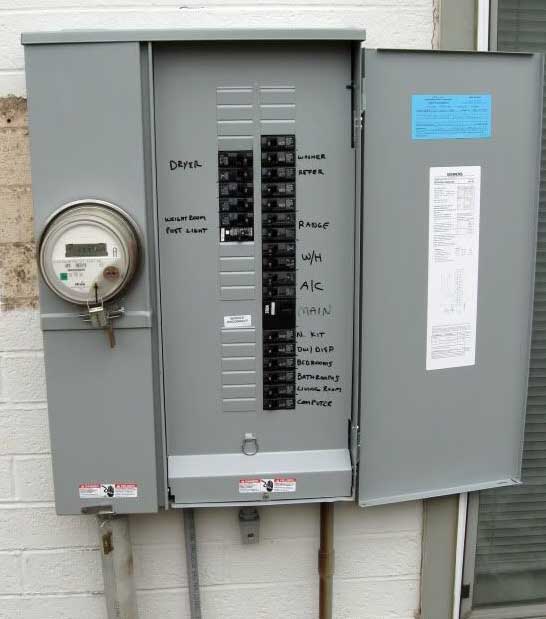I live in a mobile home and have a Zinco load center that's going on the fritz. It's currently 100 amps. I figure I might as well put in a 200 amp box since our house is 100, our shed is 50 and our a.c. is 50. The new box I'm looking at is 28.7 in tall. This will put it too close to the ground since our old box is only 13 in tall and the bottom is 18 in from the ground (pictures below) and NEC 550.32(F) requires that the bottom of the load center be 24 inches from the ground. I'll have to mount it on the backside of the pedestal opposite the meter (example below).
Currently, the load center powers a lug box in the house, lug box in the shed and an A.C. The shed has a washer, dryer, some outlets and lights. The lug center in the house has 2 awg aluminum wire running from it to the load center. None of the conductors will reach to the new load center. I really, want to avoid running new conductors for everything. It would get really expensive.
So, my questions are, can I extend the conductors by splicing? And which is best for a 2 awg conductor, splice bolts or a butt splice kit? Can I gut the current load center and use it as a junction box? If so, what kind of modifications would I have to make to the old load center to make it code compliant?
Current load center. (basicly a 100 amp lug box) It was installed in 1983.
Lug in house.
Example of what neighboring houses did when upgraded. Different owners now.
Currently, the load center powers a lug box in the house, lug box in the shed and an A.C. The shed has a washer, dryer, some outlets and lights. The lug center in the house has 2 awg aluminum wire running from it to the load center. None of the conductors will reach to the new load center. I really, want to avoid running new conductors for everything. It would get really expensive.
So, my questions are, can I extend the conductors by splicing? And which is best for a 2 awg conductor, splice bolts or a butt splice kit? Can I gut the current load center and use it as a junction box? If so, what kind of modifications would I have to make to the old load center to make it code compliant?
Current load center. (basicly a 100 amp lug box) It was installed in 1983.
Lug in house.
Example of what neighboring houses did when upgraded. Different owners now.
Last edited by a moderator:


